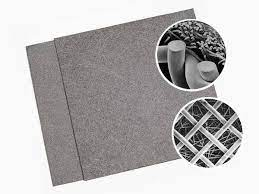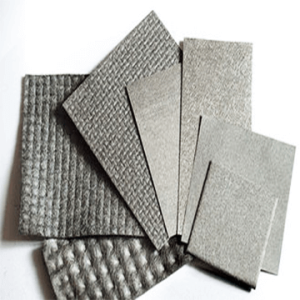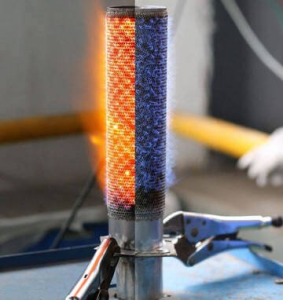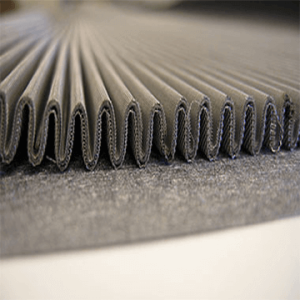
Sintered metal fiber filtration represents a significant advancement in filtration technology. This process involves fusing fine metal fibers under heat and pressure to create a robust, porous filter medium. The unique structure of sintered metal fibers offers superior durability and resistance to high temperatures and corrosive environments compared to traditional filtration materials. This makes them ideal for challenging industrial applications where reliability and longevity are paramount.
Sintered felt, a key component in this technology, plays a vital role in modern filtration systems. Its layered structure, formed from matted metal fibers, provides a depth filtration mechanism that is highly effective in trapping and retaining particles.
This capability is crucial in a wide range of industries, from petrochemical to pharmaceutical, where maintaining purity and preventing contamination is essential for both product quality and safety. The sintered felt’s adaptability and efficiency make it a preferred choice for cutting-edge filtration solutions.
The Benefits of Sintered Metal Fiber Felt
High Porosity and Permeability
One of the primary advantages of sintered metal fiber felt is its high porosity and permeability. This unique structure allows for a greater flow rate of fluids, making the filtration process more efficient while maintaining excellent particle retention capabilities.
The interconnected pores create a vast surface area within a compact form, facilitating the filtration of both gases and liquids with minimal pressure drop. This high porosity also aids in the even distribution of flow across the filter, enhancing overall filtration effectiveness and reducing the likelihood of clog formation.


Longevity and Durability: Outlasting Traditional Media
Sintered metal fiber felt surpasses traditional filtration media in terms of longevity and durability. Constructed from robust metal fibers, it withstands harsh conditions including extreme temperatures, high pressure, and corrosive environments.
Unlike conventional materials that can degrade or lose integrity over time, sintered metal fiber maintains its structure and functionality, leading to less frequent replacements and reduced maintenance costs. This durability is especially crucial in industrial settings where continuous operation is essential, ensuring reliable performance over extended periods.
Versatility in Applications: From Aerospace to Automotive
The versatility of sintered metal fiber felt extends its utility across a broad range of applications, from aerospace to automotive industries. In aerospace, it’s used for critical filtration processes where precision and reliability are paramount. The automotive industry benefits from its ability to withstand high temperatures and pressures, ideal for engine and hydraulic system filtration.
Beyond these, it finds applications in petrochemical processing, pharmaceutical manufacturing, and even in food and beverage production. This adaptability is a testament to its suitability for diverse operational demands, making it a go-to choice for advanced filtration needs.
The Sintering Process and Its Advantages
The Sintering Process: Bonding Metal Powders Under High Temperatures
The sintering process is the backbone of creating sintered metal fiber filtration media. This intricate procedure involves bonding metal powders under high temperatures, short of their melting point. During sintering, the metal powders are carefully arranged and then exposed to heat in a controlled environment.
This heat treatment causes the particles to bond at a molecular level, forming a solid yet porous structure. The process requires precise temperature control and timing to ensure the integrity and consistency of the final product. The outcome is a material that combines the strength and heat resistance of metal with the desirable porous properties essential for effective filtration.
Control Over Pore Size and Distribution
A significant advantage of the sintering process is the ability to control pore size and distribution within the sintered metal fiber felt. This control is achieved by adjusting the size and mixture of the metal powders used, as well as the sintering conditions.
By fine-tuning these parameters, manufacturers can produce filters with specific porosity levels and pore size distributions, tailored to suit various filtration requirements.
This level of customization allows for the creation of filters that can efficiently separate particles of different sizes under a wide range of operating conditions. The result is a highly versatile filtration medium that can be optimized for specific applications, ranging from fine chemical processing to heavy-duty industrial use.
Unique Features of Sintered Metal Fiber
Heat and Corrosion Resistance

Sintered metal fiber’s exceptional heat and corrosion resistance makes it a standout choice for challenging environments. This resistance is a result of the sintering process, which enhances the metal’s ability to withstand high temperatures and corrosive elements.
Such durability ensures that sintered metal fiber filtration systems can operate effectively in industries where exposure to extreme conditions is a regular occurrence. By maintaining their integrity in harsh environments, these filters offer reliability and longevity, reducing the need for frequent replacements and maintenance.
Superior Mechanical Strength
The mechanical strength of sintered metal fiber is unparalleled, thanks to the unique bonding process during sintering. This process creates strong fiber bonding, resulting in a filtration medium that can withstand high pressure, thermal shock, and frequent backflushing. This robustness is crucial in industrial settings where filters are subjected to rigorous use. The superior strength of sintered metal fiber filters not only ensures efficient filtration under demanding conditions but also contributes to the long-term durability and reliability of the filtration system.
Filtration Efficiency: HEPA and ULPA Filters
Sintered metal fiber felt excels in filtration efficiency, meeting the stringent standards of HEPA and ULPA filters. This capability allows it to remove particles as small as 0.1 microns, making it suitable for applications requiring ultra-high purity levels. The high porosity and even distribution of fiber diameters contribute to its remarkable filtration performance, ensuring that both air and liquid contaminants are effectively captured. This level of efficiency is essential in industries like pharmaceuticals, biotech, and electronics, where even the smallest particles can have significant impacts.
Each of these features – heat and corrosion resistance, mechanical strength, and filtration efficiency – highlights why sintered metal fiber is a superior choice in advanced filtration applications.
Sintered Metal Fiber Felt vs. Woven Wire Cloth

When comparing sintered metal fiber felt with woven wire cloth, key differences emerge in their construction and performance. Sintered metal fiber felt is known for its high porosity and complex three-dimensional structure, which results in superior filtration efficiency. This structure enables it to trap finer particles more effectively than woven wire cloth.
Additionally, the sintering process imparts exceptional strength and durability to the fiber felt, making it resistant to high pressure and thermal shock.
On the other hand, woven wire cloth, while also durable, typically offers less porosity and can be more prone to clogging. This difference in structure affects the filtration capability, with sintered metal fiber felt often being the more effective choice for demanding applications requiring high filtration accuracy and longevity
Diverse Industrial Applications
Sintered metal fiber felt finds its utility in a wide array of industrial applications, underscoring its versatility and effectiveness. Its superior filtration capabilities make it an ideal choice for industries such as aerospace, automotive, and petrochemical, where precision and reliability are paramount. In the pharmaceutical and food & beverage sectors, its high efficiency in removing fine particles ensures purity and safety standards are met.
Additionally, its heat and corrosion resistance properties are beneficial in harsh environments like oil and gas production. This adaptability to various industrial needs highlights the broad applicability of sintered metal fiber felt in demanding filtration scenarios
FAQ Section
How is Sintered Metal Fiber Felt Made?
Sintered metal fiber felt is created by arranging fine metal fibers into a non-woven medium and then bonding them through a high-temperature sintering process. This process forms a highly porous structure, which is key to its filtration capabilities.
What Industries Benefit Most from Sintered Metal Fiber Filtration?
Industries that benefit most from sintered metal fiber filtration include aerospace, automotive, petrochemical, pharmaceutical, and food & beverage sectors. Its efficiency and durability make it ideal for applications requiring high-level filtration in demanding environments.
What Are the Key Characteristics of Sintered Metal Fiber Felt?
Key characteristics of sintered metal fiber felt include high porosity, excellent filtration accuracy, resistance to high temperatures and corrosion, minimal pressure loss, and the ability to withstand harsh industrial conditions. These features make it highly effective for various filtration applications
Conclusion
In conclusion, sintered metal fiber filtration represents a significant advancement in filtration technology. Its unique properties, such as high porosity, superior mechanical strength, and exceptional heat and corrosion resistance, make it an ideal choice for a wide range of industrial applications.
From aerospace to the food and beverage industry, the versatility and efficiency of sintered metal fiber enhance performance and reliability. The ability to withstand harsh conditions while maintaining high filtration efficiency is a testament to its exceptional design and manufacturing. Embracing sintered metal fiber filtration can lead to more effective, durable, and cost-efficient filtration solutions across various sectors.